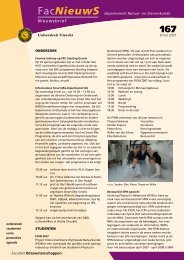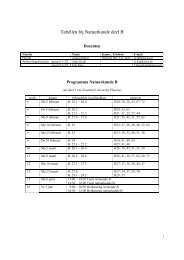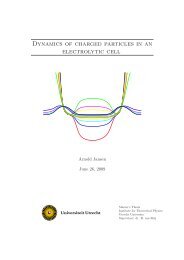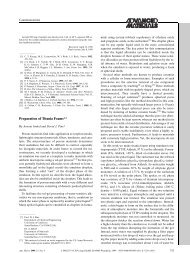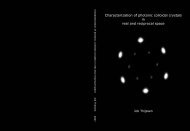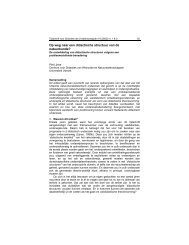Sedimentation Equilibrium of Mixtures of Charged Colloids
Sedimentation Equilibrium of Mixtures of Charged Colloids
Sedimentation Equilibrium of Mixtures of Charged Colloids
Create successful ePaper yourself
Turn your PDF publications into a flip-book with our unique Google optimized e-Paper software.
One quick check shows ∫ ∞dx Q(x) = −σ, which reassures global charge0neutrality. From equation (B.10) the meaning <strong>of</strong> κ becomes obvious. Thetypical decay length <strong>of</strong> ρ ± (x) is κ −1 as is shown in figure (B.1) below.ρ −ρ sρ +κσ/2ρ sφ0 1 2 3 4κxFigure B.1: Density pr<strong>of</strong>iles ρ ± (x) <strong>of</strong> the ions near the charged plane at x = 0as well as the dimensionless potential (dashed line). Typical decay length isequal to κ −1 , the Debye screening length.B.2 The gravitational lengthThis section is about the gravitational length. This parameter is widelyused in models that consider sedimentation <strong>of</strong> gases in gravitational fields.The grand potential functional for a system <strong>of</strong> uncharged colloids under theexternal potential <strong>of</strong> the Earth’s gravity field is <strong>of</strong> the formβΩ[ρ] = βF [ρ] +∫ H0dx ρ(x)( x ρ(x) − βµ),L (B.11)with x/L the external potential due to gravity. By the variational principlewe find the Euler-Lagrange equation, using an LDA (section 2.3.2)βf ′ (ρ) + x − βµ = 0.L (B.12)66



